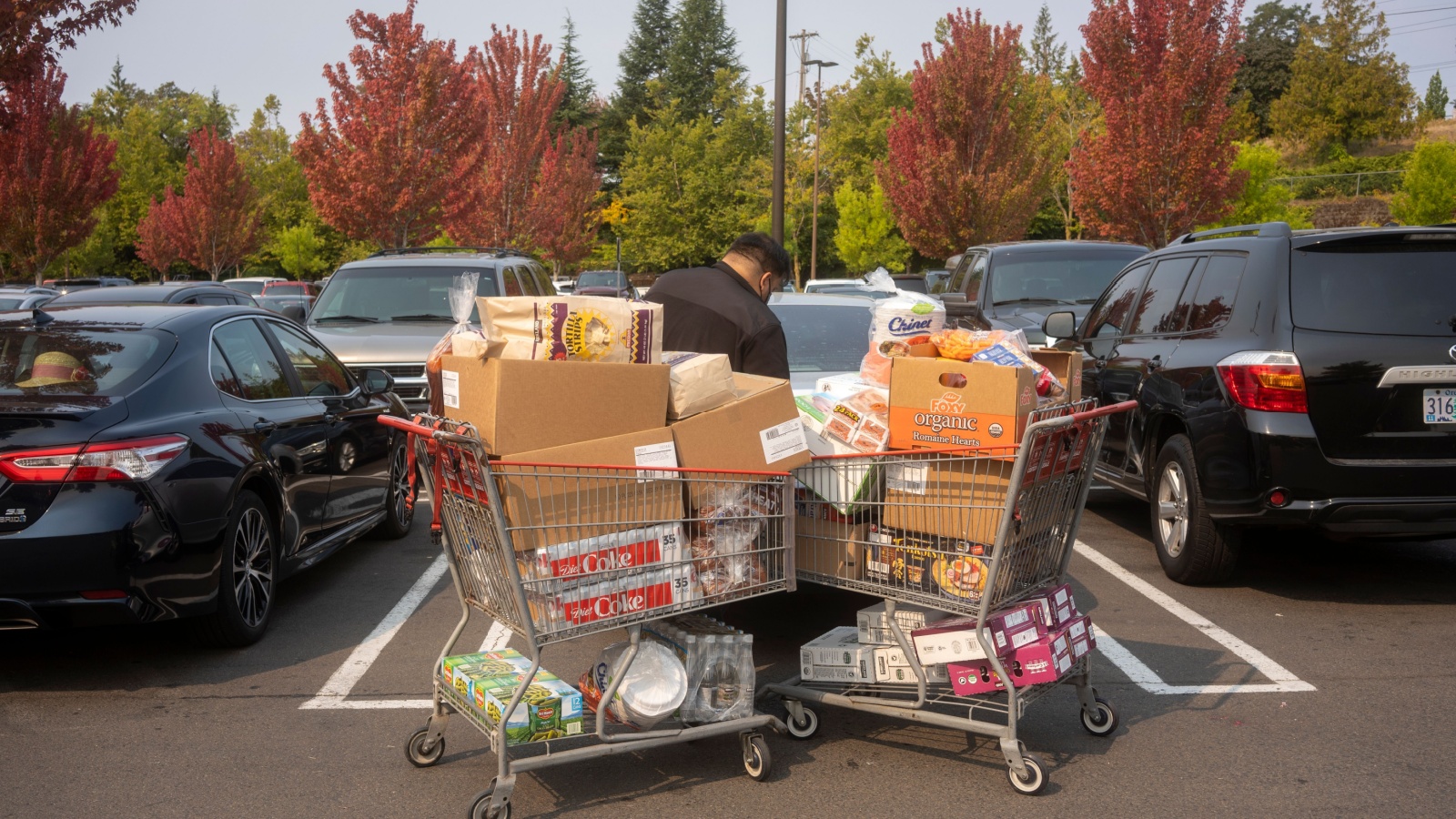Living in Canada often means juggling the realities of high costs while still wanting to enjoy life. Cutting expenses doesn’t have to feel like punishment, and it doesn’t mean giving up on experiences or comfort. The trick lies in rethinking daily choices, finding smarter alternatives, and knowing where value hides in plain sight. Here are 25 ways to cut expenses without cutting joy, the Canadian edition.
Swap Dining Out for Homemade Brunch

Restaurant brunches are fun but can easily cost $25 per person before tips. Hosting a homemade brunch saves money and often feels more personal. Eggs, pancakes, fruit, and coffee from the grocery store feed multiple people for the same price as one restaurant plate. Inviting friends over also creates a cozy environment, and everyone can contribute a dish, cutting costs further. It’s less about skipping dining out and more about reshaping it into a community activity. The result: the same joy of sharing food, without the hefty bill at the end.
Embrace the Public Library

A single hardcover can run $30, and streaming subscriptions add up quickly. Libraries in Canadian cities now offer more than books; they provide e-books, audiobooks, movies, and even museum passes. Many have free workshops, classes, and cultural events that rival paid entertainment. Access to these resources saves money without limiting learning or fun. Borrowing an e-book instead of buying one puts cash back in your pocket while still delivering the same story experience. For families, this can also mean free weekend entertainment, with no guilt about overspending.
Buy Seasonal Produce at Farmers’ Markets

Grocery store produce often comes at a premium, especially when out of season. Farmers’ markets offer fresh, local fruits and vegetables at lower prices during peak seasons. Supporting local farmers also strengthens community ties. Buying in bulk and freezing extras can stretch savings across months. For example, a basket of Ontario strawberries in June costs far less than imported ones in December. This approach allows families to enjoy healthy eating without paying for expensive imports. Eating seasonally also makes meals more exciting and diverse throughout the year.
Switch to Discount Grocery Stores

Chains like No Frills, FreshCo, and Maxi offer the same quality as premium grocery stores but at noticeably lower prices. Weekly flyers help identify deals, and price matching policies stretch dollars further. Choosing a discount grocer doesn’t mean giving up variety; most carry international foods, organics, and household goods. For shoppers willing to plan meals around weekly specials, the savings are significant. Even a small switch, like buying pantry staples at a discount store, can cut grocery bills without affecting meal enjoyment.
Plan “No-Spend Weekends”

Spending-free weekends doesn’t mean sitting indoors with nothing to do. Instead, it’s about exploring free or low-cost activities around town. Hiking local trails, attending community events, or visiting free-entry days at museums still create memorable experiences. Planning ahead makes it feel like an adventure, not a sacrifice. For example, Toronto and Vancouver often host free outdoor festivals that rival paid events. Plus, by designating two weekends a month as “no-spend,” households can save hundreds annually while still enjoying life. It’s all about shifting from costly outings to free cultural experiences.
Brew Coffee at Home

A daily $5 latte translates into over $1,800 a year. Investing in a quality French press, AeroPress, or espresso machine provides café-level drinks at a fraction of the cost. Specialty beans from local roasters elevate the experience, making it enjoyable without a coffee shop visit. Many Canadians find joy in the ritual of making coffee, experimenting with blends and flavors. Hosting a coffee morning with friends also replicates the social aspect of cafés. This swap retains the pleasure of coffee culture while slashing recurring costs.
Take Advantage of Loyalty Programs

From PC Optimum to Aeroplan, loyalty programs reward everyday spending. Earning points for groceries, gas, or travel builds up to meaningful rewards without extra effort. Savvy users stack points events with promotions for maximum value. For example, saving PC Optimum points for holiday groceries can shave $100 or more off seasonal expenses. Instead of cutting back on purchases entirely, loyalty programs give Canadians an incentive to shop smarter. Over time, these programs can fund treats or trips, delivering joy without additional costs.
Buy Quality Used Instead of New

Thrift shops, Facebook Marketplace, and consignment stores often have like-new items at half the cost. Children’s clothing, winter gear, and furniture are especially good second-hand purchases. Many Canadian cities even host clothing swaps, turning shopping into a social event. Choosing gently used items reduces environmental impact while still allowing people to refresh their wardrobes or homes. This approach cuts costs without limiting style or comfort.
Cut Cable, Keep Streaming Selectively

Traditional cable packages often exceed $100 monthly, yet many people watch only a handful of channels. Replacing cable with a mix of streaming services like Netflix, Crave, or Disney+ cuts costs significantly. Rotating subscriptions every few months ensures variety without stacking bills. For example, subscribing to one platform per season keeps content fresh and affordable. Canadians can still enjoy movie nights or binge-worthy series without paying for dozens of channels they never use. This method preserves entertainment value while trimming unnecessary costs.
Bike or Walk Short Distances

Gas, parking, and insurance make driving one of the largest household expenses. For short trips, biking or walking eliminates these costs while adding health benefits. Many cities, like Montreal and Vancouver, have extensive bike paths, making commuting safer and enjoyable. Choosing active transport also reduces wear and tear on vehicles, lowering maintenance costs. Beyond the savings, biking often feels liberating, especially in scenic neighborhoods.
Host Potluck Gatherings

Instead of one person covering an entire dinner bill, potlucks spread the cost among friends. Everyone contributes a dish, turning meals into collaborative events. These gatherings often create more variety and fun than a restaurant outing. Potlucks can even have themes, like international cuisine nights, that keep things interesting. This approach reduces expenses while still maintaining social life. Plus, it gives guests a chance to show off their cooking skills, making the event feel special without anyone overspending.
Use Community Recreation Centres

Gym memberships can cost $60–$100 monthly. Community recreation centres often provide swimming pools, fitness classes, and skating rinks for a fraction of the cost, or sometimes free. These centres are subsidized by municipalities, making them accessible to all. Families can enjoy activities without committing to expensive memberships. Many even offer drop-in passes, which prevent paying for unused time. Access to fitness and recreation remains intact, but the expense is cut dramatically, leaving more money for other joys.
Buy in Bulk Smartly

Wholesale shopping pays off when approached with intention. Items like pasta, rice, beans, and laundry detergent often cost significantly less when purchased in bulk. The trick is avoiding perishables that may spoil before use. Canadians who plan storage properly often find wholesale buying stretches budgets further without cluttering the home. Stores like Costco or Bulk Barn also allow for mixing and matching quantities, making it easier to stock up on essentials while avoiding unnecessary waste.
Cancel Unused Subscriptions

Subscription creep is real, with everything from digital magazines to niche streaming platforms silently drawing money each month. Doing a quarterly audit often reveals unused services. A family may find they’re paying for multiple music apps when one suffices. Canceling saves not just dollars but also clears mental clutter. The freed-up cash can fund a fun outing or meal.
Shop End-of-Season Sales

Patience pays when it comes to clothes, gear, or household items. Retailers slash prices heavily at season’s end to clear inventory. Buying a high-quality parka in March or patio furniture in September can mean discounts of 50% or more. These savings allow shoppers to enjoy premium products without premium prices. Planning ahead for next year’s needs ensures households stay equipped without breaking budgets.
Explore Free Online Learning

Knowledge is more accessible than ever thanks to free or low-cost online platforms. Websites like Coursera, EdX, and even local libraries offer courses on topics ranging from business to photography. Instead of paying hundreds for private workshops, Canadians can grow skills at home with flexible schedules. These platforms often provide certifications, boosting resumes without hefty tuition fees. The joy of personal growth, whether career-oriented or hobby-based, remains intact.
Embrace Energy Efficiency at Home

Utility bills take a sizeable share of monthly budgets, but small adjustments can create long-term savings. Replacing old bulbs with LEDs, sealing drafts, and programming thermostats reduce unnecessary costs. Many provinces provide rebates for insulation upgrades or appliance replacements, further easing the investment. These changes don’t reduce comfort; they often enhance it by keeping homes consistently warm or cool. Over time, families notice meaningful drops in hydro bills, leaving more money for enjoyable activities.
Use Cash-Back Credit Cards Responsibly

When managed carefully, cash-back credit cards provide steady savings. Everyday purchases, such as groceries, fuel, or utilities, accumulate small rewards that add up over the year. The key is paying off balances in full to avoid interest. Many Canadians use accumulated rewards for seasonal splurges like holiday shopping or weekend getaways. This system transforms routine spending into bonus perks. And, with careful use, cash-back programs give households an easy way to cut net costs.
Opt for DIY Repairs and Maintenance

Basic household and car maintenance often costs far less when tackled personally. Tasks like patching drywall, fixing leaky taps, or replacing windshield wipers don’t require professionals. Online tutorials make these repairs accessible to most. Canadians who embrace small-scale DIY not only save on labour costs but also gain a sense of satisfaction. For bigger jobs, having some know-how allows homeowners to better negotiate with contractors. It’s about empowerment, resourcefulness, and saving money without sacrificing comfort or safety.
Split Streaming and Service Costs

Streaming platforms, music apps, and cloud storage are often designed with family or group sharing in mind. Splitting these services among trusted friends or relatives reduces individual costs while keeping full access intact. For example, Netflix allows multiple profiles, meaning one account can serve several households legally. By coordinating, groups avoid duplicating expenses while still enjoying content or storage. It’s an efficient way to maintain digital conveniences without overpaying, especially useful for students or younger professionals balancing tighter budgets.
Grow a Small Garden

Even modest efforts in gardening provide tangible returns. Herbs like basil, cilantro, or mint grow easily on windowsills, while balcony planters can yield lettuce, tomatoes, or peppers. These small harvests reduce grocery spending, particularly on items that usually cost more per gram than staples. Gardening also doubles as a relaxing hobby, improving mental health while offering fresh produce. Community garden plots extend the opportunity for apartment dwellers.
Choose Pre-Owned Electronics

Upgrading tech doesn’t always require buying brand new. Refurbished or certified pre-owned electronics, such as laptops or smartphones, often perform at the same level but cost significantly less. Retailers like Apple and Best Buy in Canada provide warranties, offering reassurance on quality. This option allows families to stay connected, entertained, and productive without absorbing high retail prices. For those who replace devices frequently, pre-owned purchases make upgrades far more sustainable.
Travel with Rewards and Off-Peak Deals

Vacations don’t have to vanish under budget constraints. Booking travel during shoulder seasons, spring or fall, means lower rates on flights and hotels. Using loyalty points through programs like Aeroplan or hotel chains stretches dollars further. Canadians still enjoy adventure, but without inflated peak-season pricing. Smaller destinations within Canada also offer affordable getaways, avoiding costly international flights. With planning, travel remains exciting, memorable, and financially manageable.
Borrow or Rent Instead of Buying

Certain purchases don’t justify ownership. Tools, sports gear, or formal clothing are often used only once or twice a year. Borrowing from friends or renting eliminates storage hassles and saves significant money. Communities across Canada are embracing “libraries of things,” where residents check out equipment as needed. This system ensures access without the burden of ownership. Renting skis for a weekend or borrowing a drill for a project keeps activities enjoyable and affordable. All in all, the flexibility makes it practical.
Focus on Experiences, Not Things

Redirecting money from consumer goods to experiences often cuts costs while boosting happiness. A picnic in a local park, attending free concerts, or exploring hiking trails delivers rich memories without high expenses. Experiences often linger longer in satisfaction than material items, making them a smarter investment. Families or individuals who prioritize outings, connections, and personal growth discover they save money while enriching their lives.
21 Products Canadians Should Stockpile Before Tariffs Hit

If trade tensions escalate between Canada and the U.S., everyday essentials can suddenly disappear or skyrocket in price. Products like pantry basics and tech must-haves that depend on are deeply tied to cross-border supply chains and are likely to face various kinds of disruptions
21 Products Canadians Should Stockpile Before Tariffs Hit
